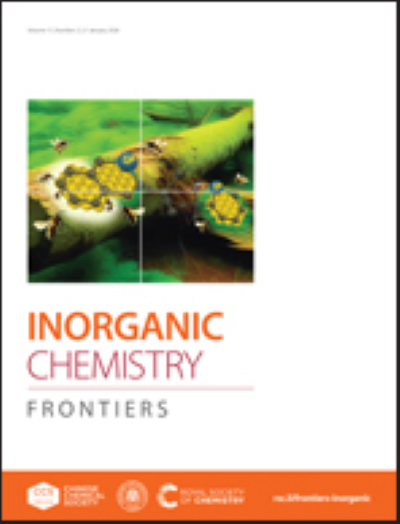增强对称锂离子电池:利用超细Li2FeSiO4/C纳米颗粒构建多面体结构作为双功能阴极和阳极
IF 6.1
1区 化学
Q1 CHEMISTRY, INORGANIC & NUCLEAR
引用次数: 0
摘要
Li2FeSiO4由于其高容量、低成本和优异的稳定性,是一种很有前途的锂离子电池正极材料。然而,它的低电导率和缓慢的Li +扩散阻碍了它的进一步发展。在这项工作中,通过原位限制螯合策略,成功地合成了由超细Li2FeSiO4/C纳米颗粒(2-10 nm)构建的多面体结构。柠檬酸既作为碳源,在Li2FeSiO4上形成导电碳层,又作为螯合剂,将Fe3⁺限制在正硅酸四乙酯网络内。这种方法可以通过增强的Li +和电子传递途径形成超细的Li2FeSiO4。此外,多面体结构还暴露了Li+扩散的更活跃的方面,利用可逆的Fe0/Fe2+, Fe2+/Fe3+和Fe3+/Fe4+氧化还原反应。优化后的样品具有高容量(0.03 A g-1时178.7 mAh g-1, 0.4 A g-1时660.9 mAh g-1)和优异的循环稳定性(循环200次后,0.1 A g-1时126.9 mAh g-1, 0.5 A g-1时678.1 mAh g-1)。Li2FeSiO4//Li2FeSiO4对称全电池在0.03 a g-1下的可逆容量为141.1 mAh g-1,具有良好的循环稳定性。利用原位EIS进一步分析了电极动力学和相变。这项工作提出了一种简单有效的合成超细纳米晶体的方法,为对称锂离子电池开辟了新的可能性。本文章由计算机程序翻译,如有差异,请以英文原文为准。
Enhanced Symmetric Lithium-Ion Batteries: Utilizing Polyhedron Structures Constructed from Ultrafine Li2FeSiO4/C Nanoparticles as Dual-Function Cathode and Anode
Li2FeSiO4 is a promising cathode material for lithium-ion batteries, due to its high capacity, low cost, and superior stability. However, its low conductivity and slow Li⁺ diffusion hinder further development. In this work, polyhedron structures constructed from ultrafine Li2FeSiO4/C nanoparticles (2-10 nm) were successfully synthesized via an in situ confined chelation strategy. Citric acid served as both a carbon source, forming a conductive carbon layer on Li2FeSiO4, and a chelating agent, confining Fe3⁺ within the tetraethyl orthosilicate network. This approach enabled the formation of ultrafine Li2FeSiO4 with enhanced Li⁺ and electron transport pathways. Additionally, the polyhedron structure also exposed more active facets for Li+ diffusion, leveraging reversible Fe0/Fe2+, Fe2+/Fe3+ and Fe3+/Fe4+ redox reactions. The optimized sample showed high capacity (178.7 mAh g-1 at 0.03 A g-1 and 660.9 mAh g-1 at 0.4 A g-1) and superior cycling stability (126.9 mAh g1 at 0.1 A g-1 and 678.1 mAh g-1 at 0.5 A g-1 after 200 cycles). The Li2FeSiO4//Li2FeSiO4 symmetric full battery achieved a reversible capacity of 141.1 mAh g-1 at 0.03 A g-1 with an excellent cycling stability. Electrode kinetics and phase transitions were further analyzed using In-situ EIS. This work presents a simple and efficient method for synthesizing ultrafine nanocrystals and opens new possibilities for symmetric lithium-ion batteries.
求助全文
通过发布文献求助,成功后即可免费获取论文全文。
去求助
来源期刊

Inorganic Chemistry Frontiers
CHEMISTRY, INORGANIC & NUCLEAR-
CiteScore
10.40
自引率
7.10%
发文量
587
审稿时长
1.2 months
期刊介绍:
The international, high quality journal for interdisciplinary research between inorganic chemistry and related subjects
 求助内容:
求助内容: 应助结果提醒方式:
应助结果提醒方式:


